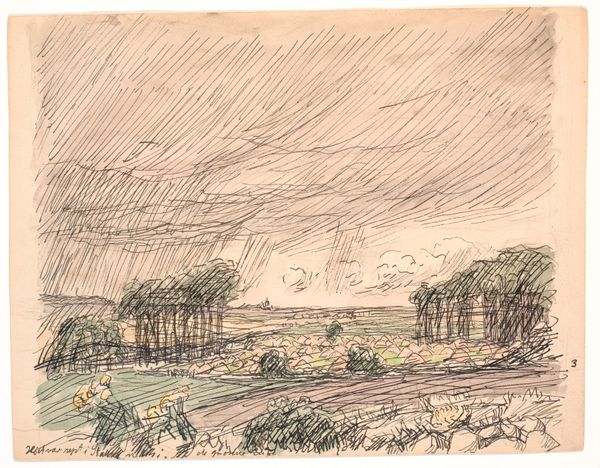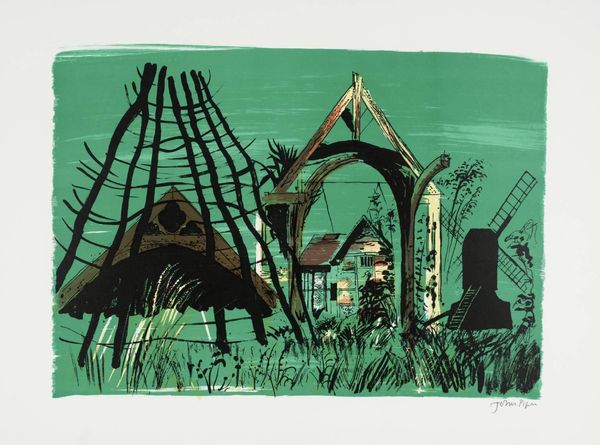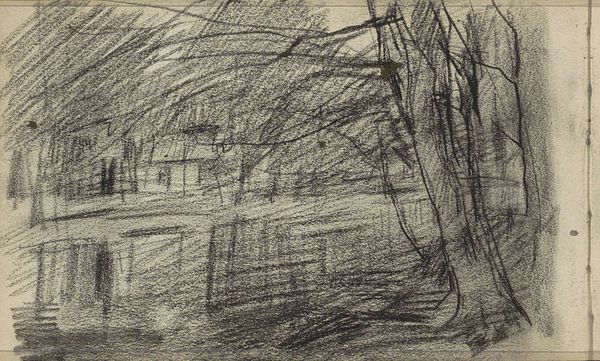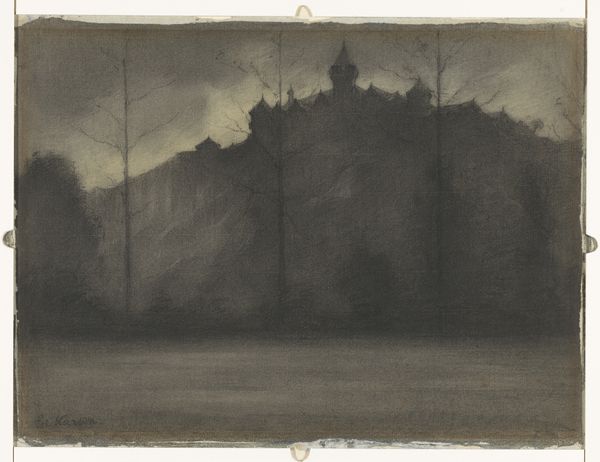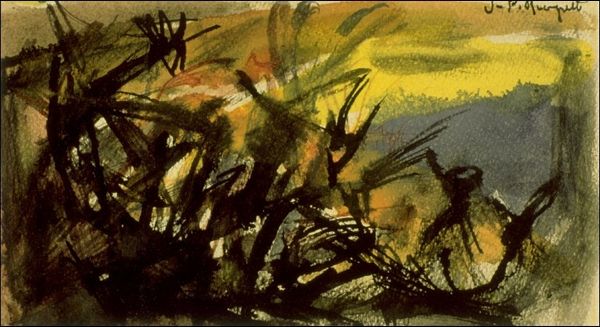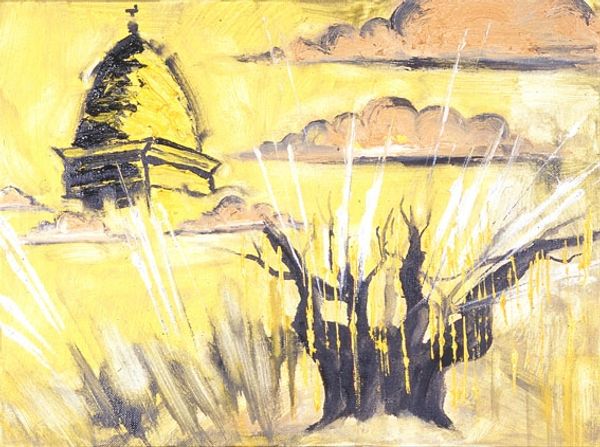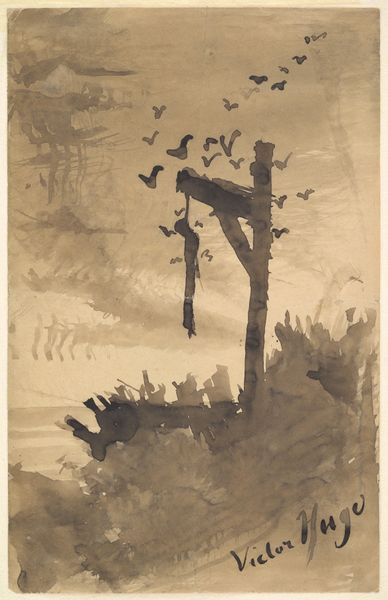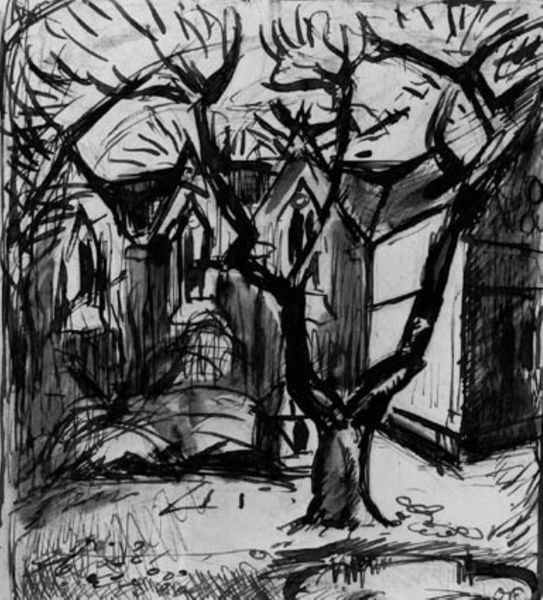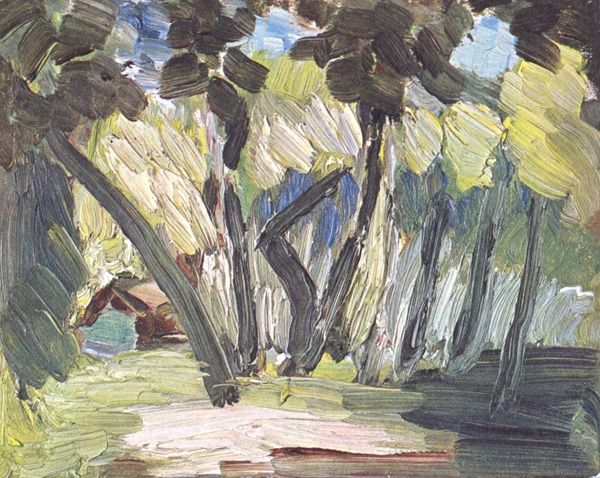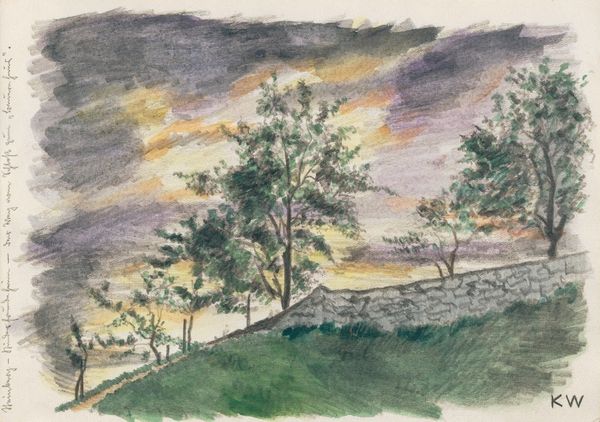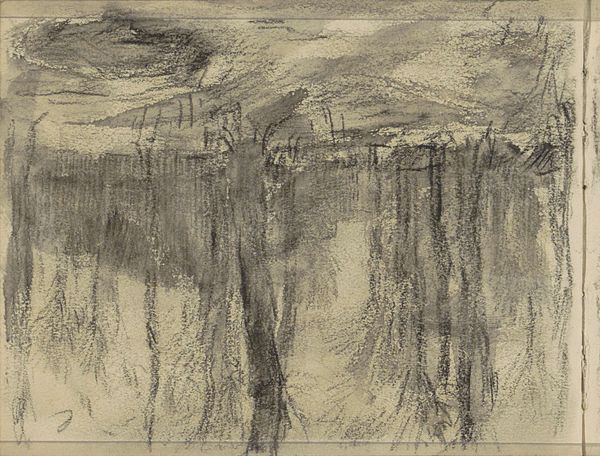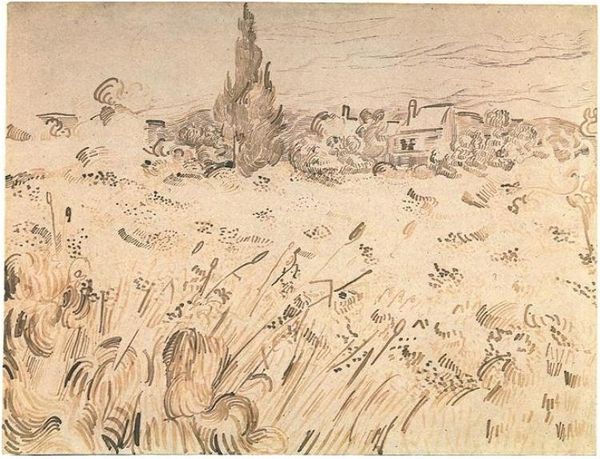
#
tree
#
landscape illustration sketch
#
environment concept design
#
fantasy concept art
#
cross
#
fluid art
#
coloured pencil
#
watercolour illustration
#
mixed medium
#
fantasy sketch
#
watercolor
#
environment sketch
Dimensions: 30.7 x 42 cm
Copyright: Mstislav Dobuzhinsky,Fair Use
Curator: Here we have Mstislav Dobuzhinsky’s, "Jurgaičiai. The Hill of Crosses," completed in 1934. Dobuzhinsky captures a place of pilgrimage and resistance in Lithuania. Editor: My immediate impression is of a haunted, almost spectral landscape. The crosses seem to multiply endlessly, receding into a stormy horizon. Curator: Indeed, the somber palette, the loose application of what appears to be watercolour and perhaps colored pencil, lends it a dreamlike quality. Look closely at the construction of these crosses, the variations in their size and design—a vernacular architecture built of faith. Their proliferation points to persistent labor. Editor: The cross itself is a multivalent symbol, of course. Primarily associated with Christianity, it speaks to suffering, sacrifice, and redemption. But here, clustered en masse, I think the cross takes on additional layers of meaning: resilience, a marker of memory, a bulwark against oppression. Curator: I agree. It's crucial to recognize that during Dobuzhinsky's time and even today, the Hill of Crosses held significance as a site of defiance against foreign powers and suppression. The crosses were repeatedly bulldozed by Soviet authorities, only to be replanted, showing continued material production and labor. Editor: It's interesting how Dobuzhinsky utilizes atmospheric perspective, blurring the background, reinforcing this sense of the hill’s endless accumulation of intention and meaning over time. The hill rises as an iconic image and symbol of defiance, a landscape painting saturated in political meaning as well as devotion. Curator: Precisely. Each cross individually constructed by unknown makers in acts of piety, remembrance, and, at times, outright defiance of imposed authority. Think about the individuals who shaped, carved, and planted them. Editor: Seeing the world through Dobuzhinsky’s eyes certainly reveals this location as far more than a simple landmark, showing how humans seek solace in the most striking symbols. Curator: And by depicting that symbolic power, the piece becomes an index for Lithuanian material culture.
Comments
No comments
Be the first to comment and join the conversation on the ultimate creative platform.
